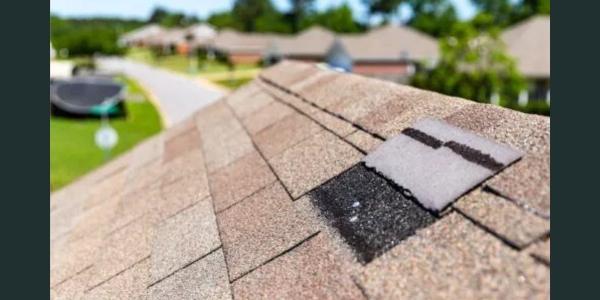Failed Roofs Gone Bad: 7 Telltale Clues it's Time to Replace Your Home's Roof

The Metal Roofing Alliance provides some important clues that signal it may be time for a new roof.
If there’s one thing homeowners can agree on, it’s this: Having to replace a worn-out, damaged or failed roof is no fun. That’s why homeowners often push the limits on the life of their roof — even if they suspect issues or problems — to try and squeak out a year or two more before replacing it. But doing so can lead to trouble, especially when severe weather hits. A compromised roof can result in thousands of dollars in additional costs due to inefficiency, leaks, failure or even worse, diminished protection for your home and family.
“Spring is the time many homeowners begin to wonder whether they should replace their roof,” said Renee Ramey, executive director of the Metal Roof Alliance (MRA). “There’s no doubt deferring needed roof repair and replacement projects can be a real gamble, leading to worsening problems and additional expenses down the road, so it’s important that homeowners know what to look for when it comes to potential signs of trouble.”
Unfortunately, with some material types such as asphalt, it can be hard to spot the signals for needed roof repair and replacement. For example, hailstones can dislodge or cause cracks that may be difficult to see. If left unaddressed, these weak points can allow moisture to seep into the interior and compromise wind resistance. The age of your roof isn’t always a good indicator of whether you may need a new roof. Asphalt, in particular, is subject to premature aging; its lifespan is greatly impacted by climate conditions, manufacturing and installation quality.
According to the MRA, here are some important clues that signal it may be time for a new roof:
- Material gone bad: Curling, cracking, blistering, staining or breakage—beware of anything that visually indicates the material is reaching the end of its life. Loose or missing material or having to fix a recurring issue is also a sign that your roofing problems may run deeper than a simple repair.
- Unsightly sags: Roofs that are weak, deteriorating or have been improperly installed may begin to bow or sag — a clear indication it needs replacing.
- Small signs/big problems: Lots of granules in your gutters or downspouts may be a clue your asphalt shingles are deteriorating. Spotting exposed or loose nails also indicates a problem as that can lead to water penetration and leaks.
- Interior indicators: Any water damage inside your home or attic may signal roof problems and can increase the risk of mold and mildew growth. Inadequate roof ventilation also may exasperate these issues.
- Wasted energy: Improper airflow from damaged roofs and insufficient attic ventilation can cause heating and cooling bills to spike. Better performing roofs such as ENERGY STAR qualified “cool roofs” help lower energy costs year in and out.
- Compromised components: Missing or damaged flashings, curbs and roof jacks increase the opportunity for water leaks and can result in roof material failures.
- Improper placement: If your current roof is vulnerable to climate threats in your region — such as having a wood shake roof in a wildfire prone area — it’s time for a replacement that offers more safety and protection.
To spot roof issues before they potentially turn into major problems, MRA suggests homeowners conduct an annual (at minimum) evaluation of their roof’s condition and perform recommended maintenance and care on an ongoing basis. It is also important to thoroughly inspect a roof after extreme weather events that include high winds, heavy hail, rain, ice and snow. To avoid a repeat situation of needing to replace a roof that has failed after just a few years, realize the best return for a re-roofing investment is to choose durable, quality material and installation methods provided by reputable, experienced manufacturers and installers. Arm yourself with information by taking advantage of free resources such as the MRA’s Residential Roofing Buyer’s Guide to guide you through the process and help you select the best roof for your home…one that can offer many decades of proven protection and reliable performance.
You can download the MRA Residential Roofing Buyer’s Guide at www.metalroofing.com.
About Metal Roofing Alliance (MRA)
Representing the residential metal roofing industry in the United States and Canada, the Metal Roofing Alliance (MRA) was formed to help educate consumers about the many benefits of metal roofing. The main objective of MRA is to increase awareness of the beauty, and money-saving advantages of quality metal roofing among homeowners, as well as to provide support to the residential metal roofing industry. For more information, visit MRA at www.metalroofing.com.









Comments
Leave a Reply
Have an account? Login to leave a comment!
Sign In